Check out the secrets behind the track ‘No Weapon’ from Ijale.
Ijale dropped his sophomore album last year, OTTN (On To The Next), and it’s a jam packed ride that caught the attention of both media and fans.
Deep down on that album is the song No Weapon that started off with strums on a bass guitar.
Ijale has opened up his Ableton Live set to show you all the secrets, tricks, processing and the inspiration behind the music.
Read on as he talks through the parts of No Weapon.

Bass
“The Track funnily enough started with the bass guitar that I’ve played like a regular electric.
I love the way that Thundercat strums chords with his bass and the warmth that it gives in the low mids when that happens, so I took a crack at doing that and the song started to take shape.”
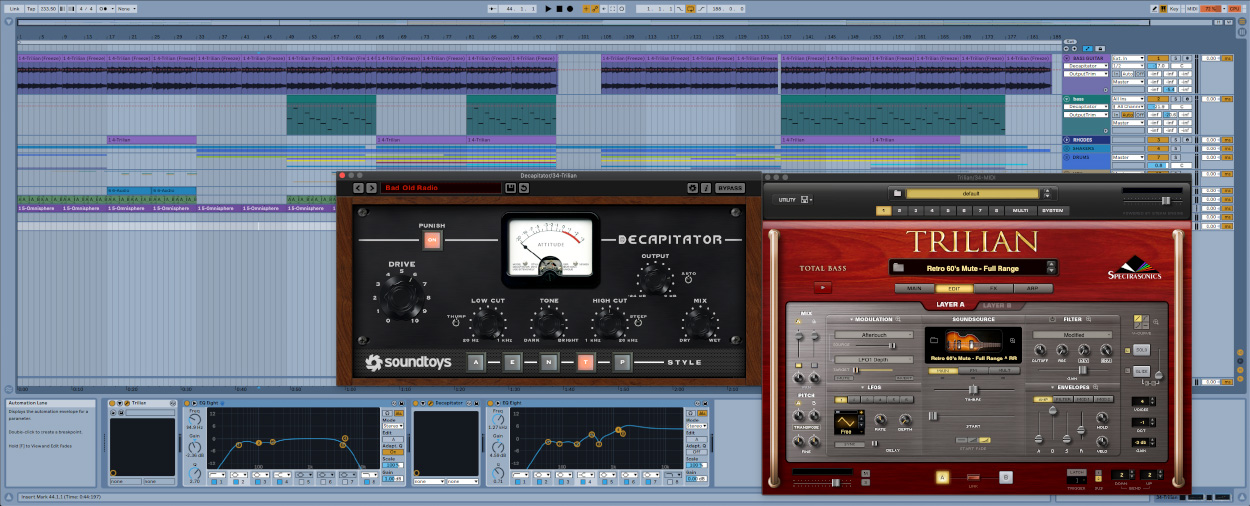

“I filtered out the lower frequencies’s to allow it to sit better in the mix and gel with the other elements that sat in a similar frequency range like the Rhodes, which follows the same chord structure with a few different notes for subtle variation.
In this way this bass element doesn’t really act like a bass at all. I use an 808 with exaggerated high end in certain areas for the lower frequency duties.”
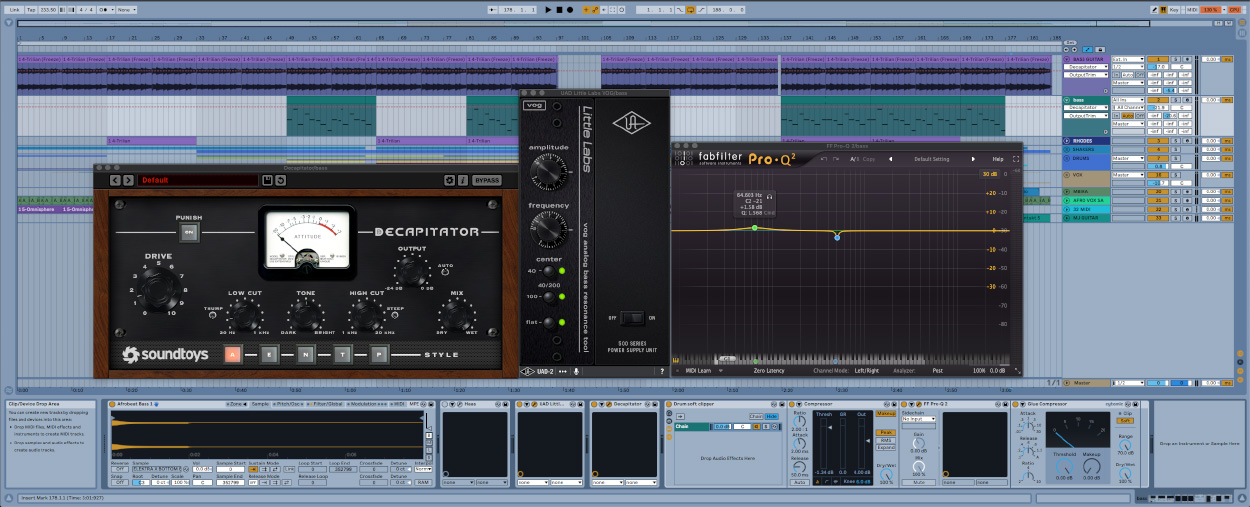

Drums
“After the chords were there, I started adding percussion. Afrocentric music largely relies on drums and the interplay between different percussive elements and the polyrhythms they carry.
I had a lot of fun throwing a bunch of different afrocentric percussive elements at the track, then subtracting elements to give more space back to the arrangement. I enjoy when the percussion kind of ducks and weaves in between things.
This is where the track gets most if not all of its energy. The kick in contrast stays pretty regular and acts as a grounding 4 to the floor pulse.”
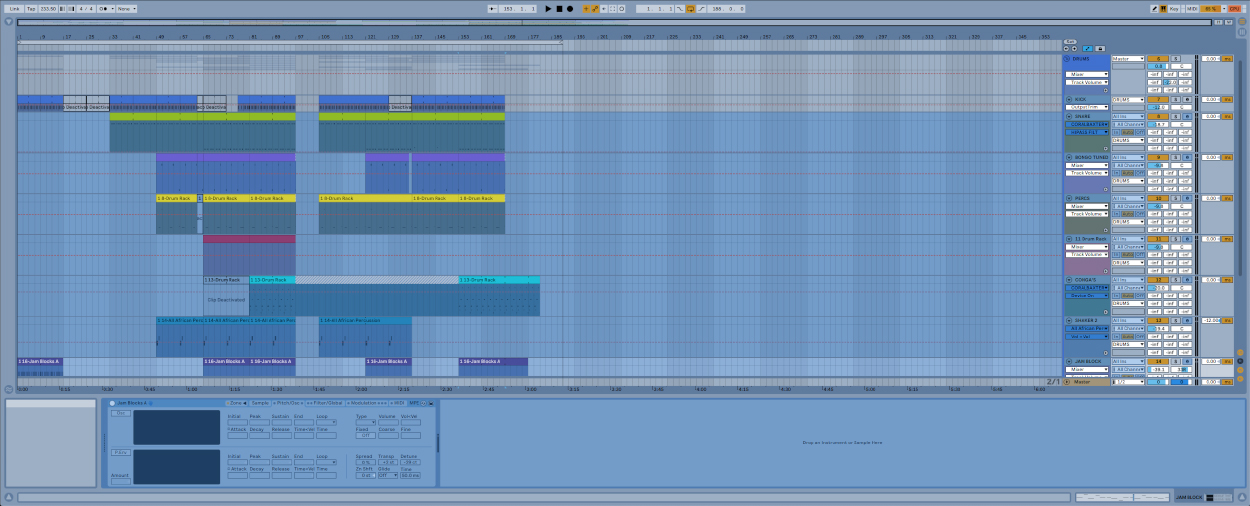
The main percussive element is the Shekere sample which remains pretty constant the entire time. The sample rushes and lags in a way that give the whole thing a bit of a non quantized feel when everything else gets involved.
I got a lot of these sample from trawling the net, really trying to get the sample packs from producers who live and work on the continent or in Nigeria specifically.
I just wanted my money to go to them rather than splice or whatever (I got a lot of the percussion used from producers like OY Productions, Veshbeats and Sabar Productions).
Unlike a lot of other afro-pop or afrobeats tracks I’ve heard, I wanted to dirty things up in the percussion so I used a few different tape emulation plugins to wear each element down and add grit. Wavesfactory’s Cassette (pictured) and Wow Control by GoodHertz are my go to’s.”

Chords & Melodies
“The drums take up a lot of real estate for this song so the other elements around it — save for my vocals — are pretty sparse. I used a Rhodes to thicken up the mid range and nod back to the original Fela Kuti inspired afrobeat sound of the 60’s and 70’s.
I also used a Kontakt VST of an Mbira (Thumb Piano) which is a staple in the afro sound in certain area’s to add more energy in key sections.
I’ve also added some sparse guitar from another Kontakt VST to add some counter melodies in the choruses and other key moments. Tried to have someone play it live but for whatever reason the VST just sounded better.
Both the Mbira and guitar are fairly staccato and cutting, which allows them to act both melodically and percussively at the same time.”
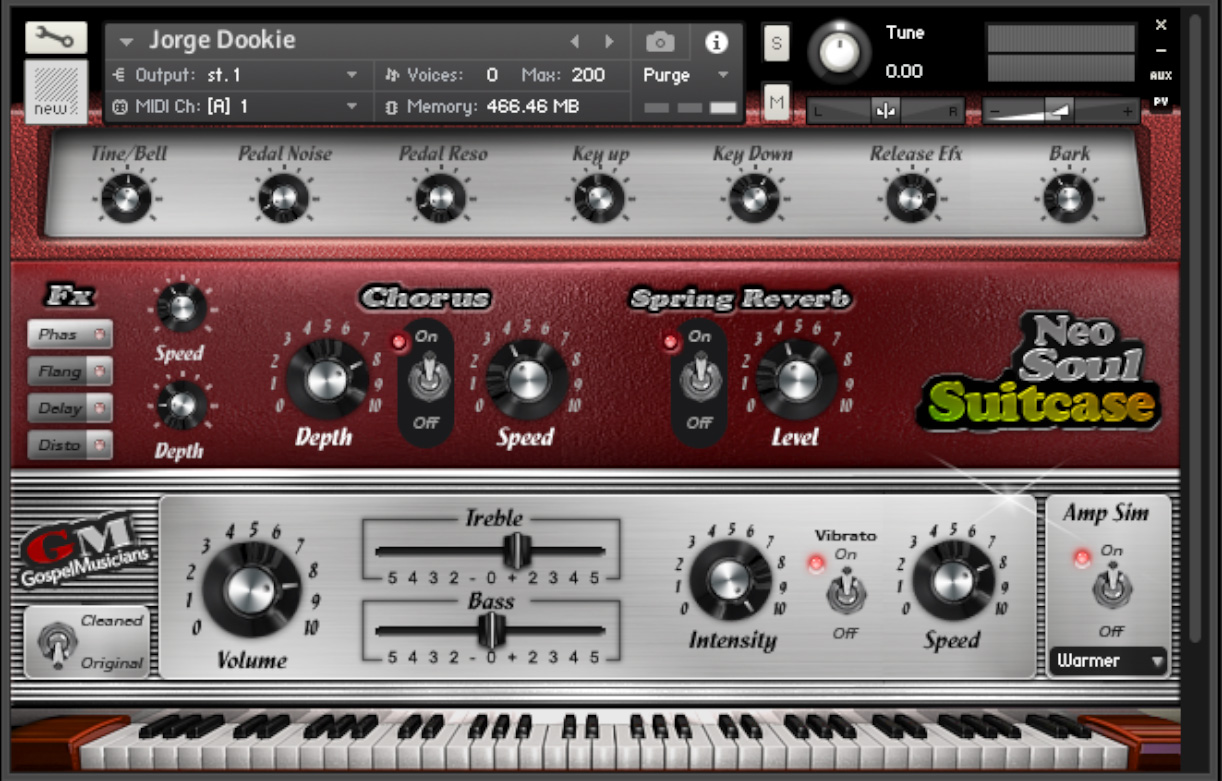



Vocals
“When I started to attack the vocals, the Ableton file was already heaving in terms of CPU, so I bounced the track out and did the vocals in a different session.
Theres a bunch of layers that I’ve flattened and consolidated, so some of the tracks you’ll see in the screenshots are 2 or 3 different takes on top of one another baked into one audio file.
Nothing too special with the vocals, just a fair few harmonies to give the track some some weight and excitement when necessary.
My vocal chain at the time started with a Neumann TLM 103 Mic which ran into a Universal Audio Neve 1073 Preamp Plugin.
I used a lot of Soundtoys decapitator to thicken out the vocals and give them a less computerized feel after I processed them with autotune.”
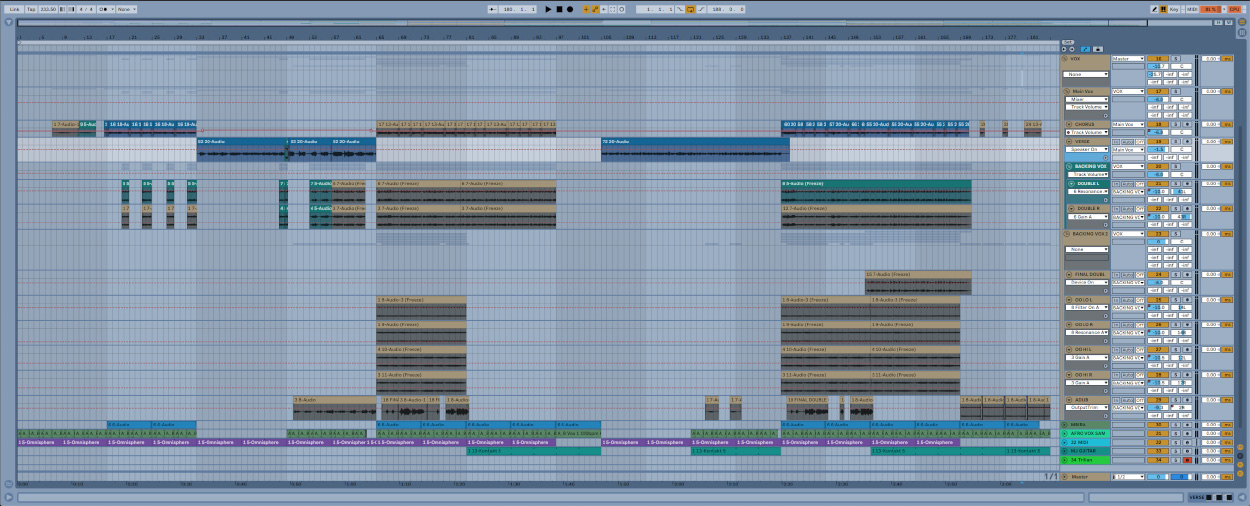
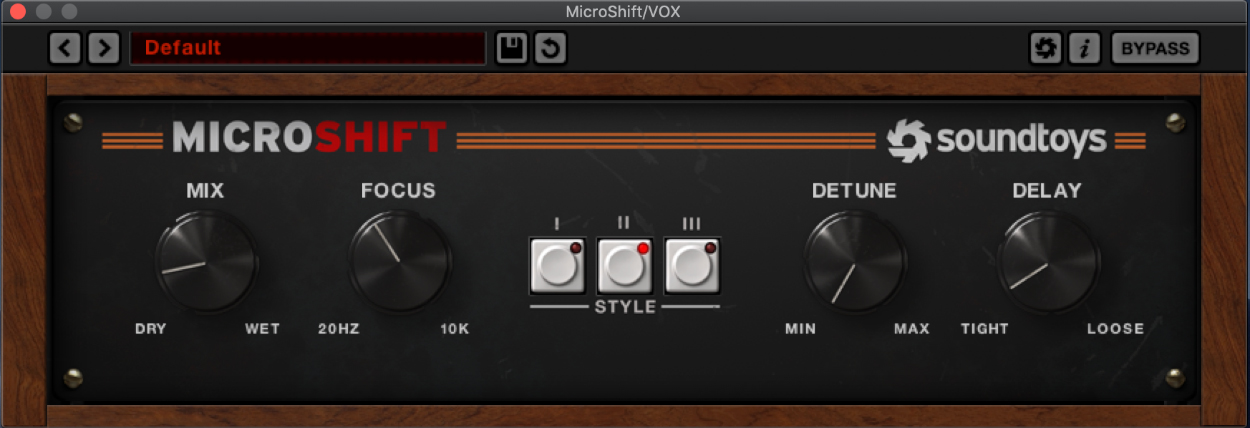


Mixing Elements
“Once I feel like all the elements I want are there in a track, but don’t feel like the track is necessarily “done” I go to my Auxiliary or “return” channels and use parallel compression and other subtle effects to thicken things up without overcooking the arrangement with needless shit.
As you can see in the screenshot below theres a lot of them. Some are less busy than others. I use returns for my reverbs (One short room reverb and one long atmospheric one), which I send most things to at different degrees.
Smashing the drums with saturation and compression in a send and then dialling a little bit of that hella distorted version of your drums into the mix just a liiiittle bit just adds heaps of colour and presence.
I usually parallel the vocals in different instances to get both the fundamental “sweet spot” of the mids, filtering and (over) compressing that area so its doesn’t get lost in the mix, then I turn up the volume of the send to add this extra energy to the mix to taste.
One mad parallel compression trick I use in literally every track now is one I got from Youtube, made by Mix God Andrew Scheps in which you run a Pultec eq into an LA2A compressor, then into another Pultec, attenuating and boosting certain frequencies at different measures in each instance (see screenshots below) sending your vocals to this send adds an undeniable presence for the fundamental lows and sparkly highs of your vocals, which when dialled in to the mix allows every word your saying to cut through a mix, even when its really busy.
Just turn the volume of the send up if you need more. Blew my mind when I found it.
Theres a bunch of other shit I do with them, but basically any thing you feel like you need more of in a track you can pretty much achieve if you use return tracks creatively.”






